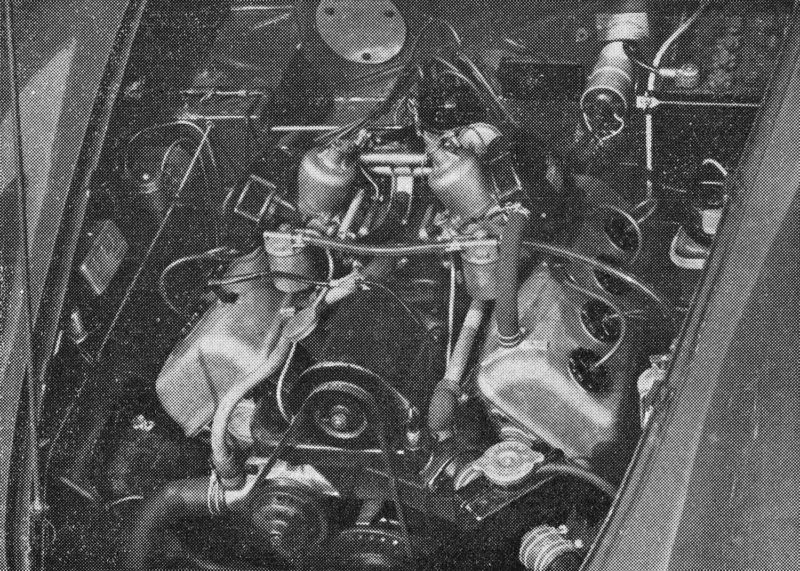Notes From The Archives – Daimler Dart SP250
September 13, 2018
Daimler Dart SP250
Words by: Gary Horstkorta – July 2018
“I say old chap, is that a Hemi V8 in your British Sports Car?” The answer in this case is yes and it’s we’re not talking about a resto mod or an old sports car with just an engine swap. Back in 1959, the Daimler Motor Company made a significant jump from a history of producing higher end passenger cars, ie limousines, to produce a new, two-seat sports car.
To understand how a British car company with a German name arrived at this point, let’s go back to the year 1893 when Frederick Simms of England bought the rights to Gottlieb Daimler’s engine design and former a new company, the Daimler Motor Company. Three years later the company began producing motorcars in the town of Coventry. In 1896 they became the official transportation of the Royal Family and began producing limousines for the next five decades. In 1910, the company was sold to Birmingham Small Arms (BSA) best known in the U.S. for their motorcycles. Just for fun, ask your friends who is England’s oldest car company and see if anyone of them know it is Daimler.

Roy Parker trails a Lotus 7 at Cotati in 1968
In the 1950’s Daimler decided to broaden its product line by producing a line of smaller cars to augment their production of high end models. After a top management shakeup, it was decided to build a two-seat sports car and a higher performance salon based on a new, compact V8 engine of their own design. Their main target market was the U.S. market where sports car sales were growing rapidly.
The engine would be a 2.5 Liter, V8 with Hemispherical combustion chambers, using a single camshaft and pushrods fed by two SU carburetors. The body would made of fiberglass over a copy of a Triumph TR3 frame and suspension but with four wheel disc brakes. To appeal to the American market, the had a low, chrome front grill and prominent tail fins similar to those found on the Sunbeam Alpine. Overall it was not a particularly attractive design and in fact when the car was debuted at the 1959 New York Auto Show as the Daimler Dart. Unfortunately it received the dubious honor of being unofficially voted the ugliest new car on display. In addition Dodge already owned the trademark for the Dart name so Daimler changed the model to the SP250.

Dale Duncan leads at Marlboro in 1960
Regardless of the publics opinion of the cars looks, the appeal of the 140 hp V8 engine coupled with a 2000 lbs. overall weight was enough to attract several East Coast racers to purchase the car and take it racing. The SP250 was classified by the SCCA in C Production where it would be up against stiff competition in the form of AC Bristol, Jaguar XK-120, Porsche 356, Mercedes Benz 300SL, Austin Healey 3000 and the Arnolt Bristol.
A number of cars were raced in the Eastern half of the U.S including by a young, upcoming driver by the name of Mark Donohue at Bridgehampton, Watkins Glen And Thompson Raceway in 1962, However one driver in particular had great success with the car and that was Dale Duncan who raced to the SP250 to the C Production National Class Championship in 1963.

Tidy Daimler V8 engine provided horsepower and a great sound
Out west, the SP250 was rarely seen on race grids perhaps due to the more popular competing brands within C Production and the limited number of cars delivered to the U.S. With a total production of only 2,600 cars (1959-64) the average number of cars reaching the U.S. was approximately 200 per year, a very small amount. However, there were several drivers who raced the car including Lewis Rattner, Chuck Howard, J. Jacobsen and Jim Greaves but they did not reach the level of success Duncan had in the East.

National Champion Dale Duncan at Cumberland in 1960
In the early 1960’s, BSA sold the company to Jaguar who eventually stopped the SP250 due to high production costs and possible competition with the XKE. Jaguar did use the tidy, spirited and reliable V8 engine for use in their smaller sedans. While the Daimler name lived on within Jaguar for a while longer until British Leyland and Jaguar split up and Jaguar retained the Daimler name, which they do to this day.
Ironically the once “ugly duckling” SP250, even though not a sales success, has found a growing level of popularity among British Sports Car Collectors. In recent years cars in good condition can sell for more than $40,000 and climbing. For an interesting up close look at the SP250, check out this episode of Jay Leno’s Garage.
